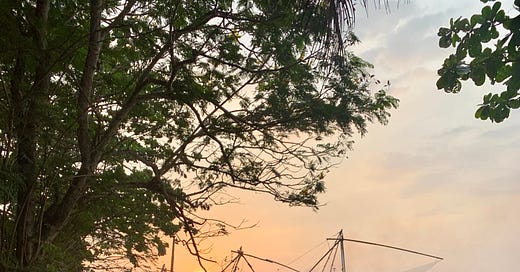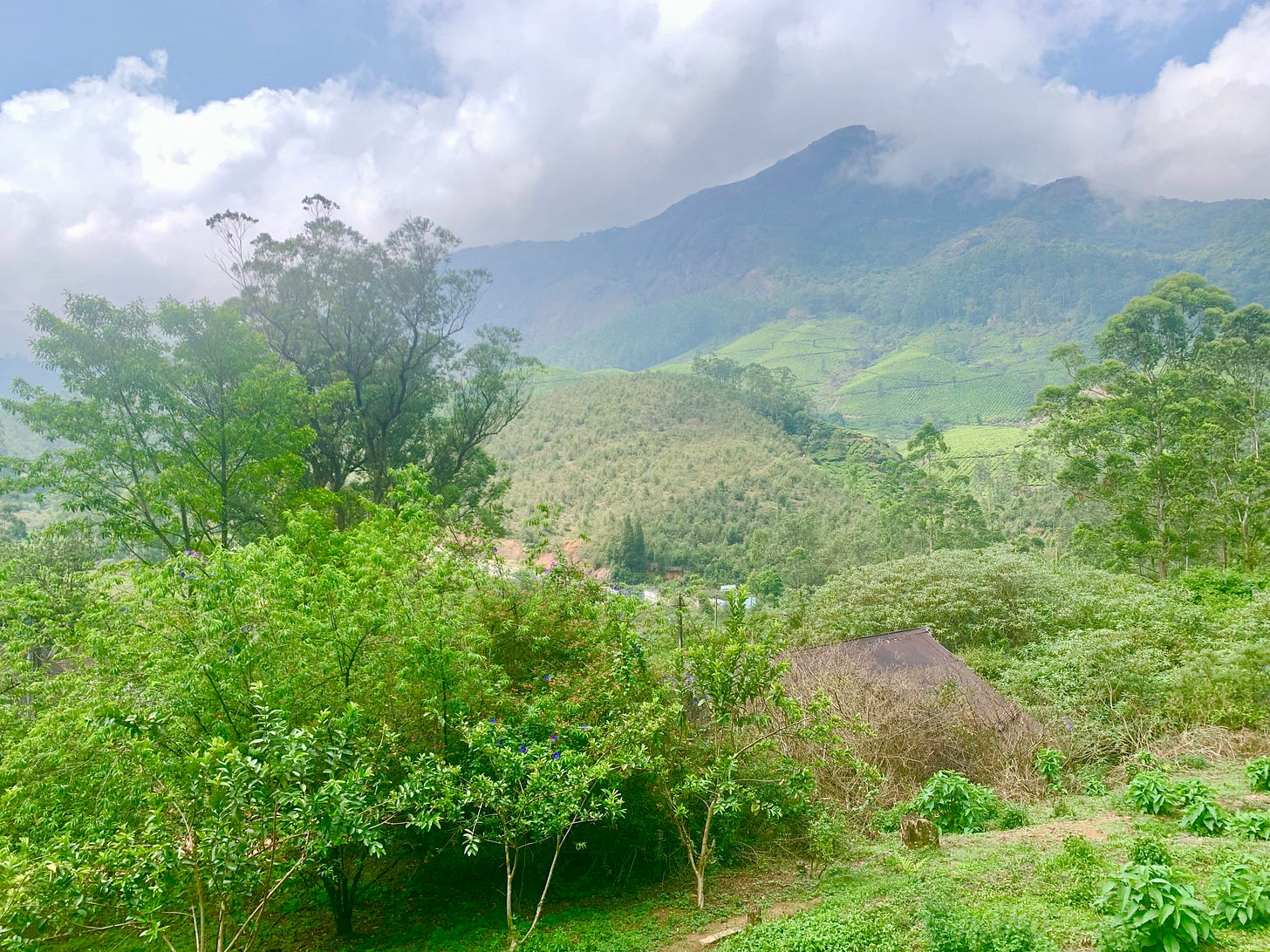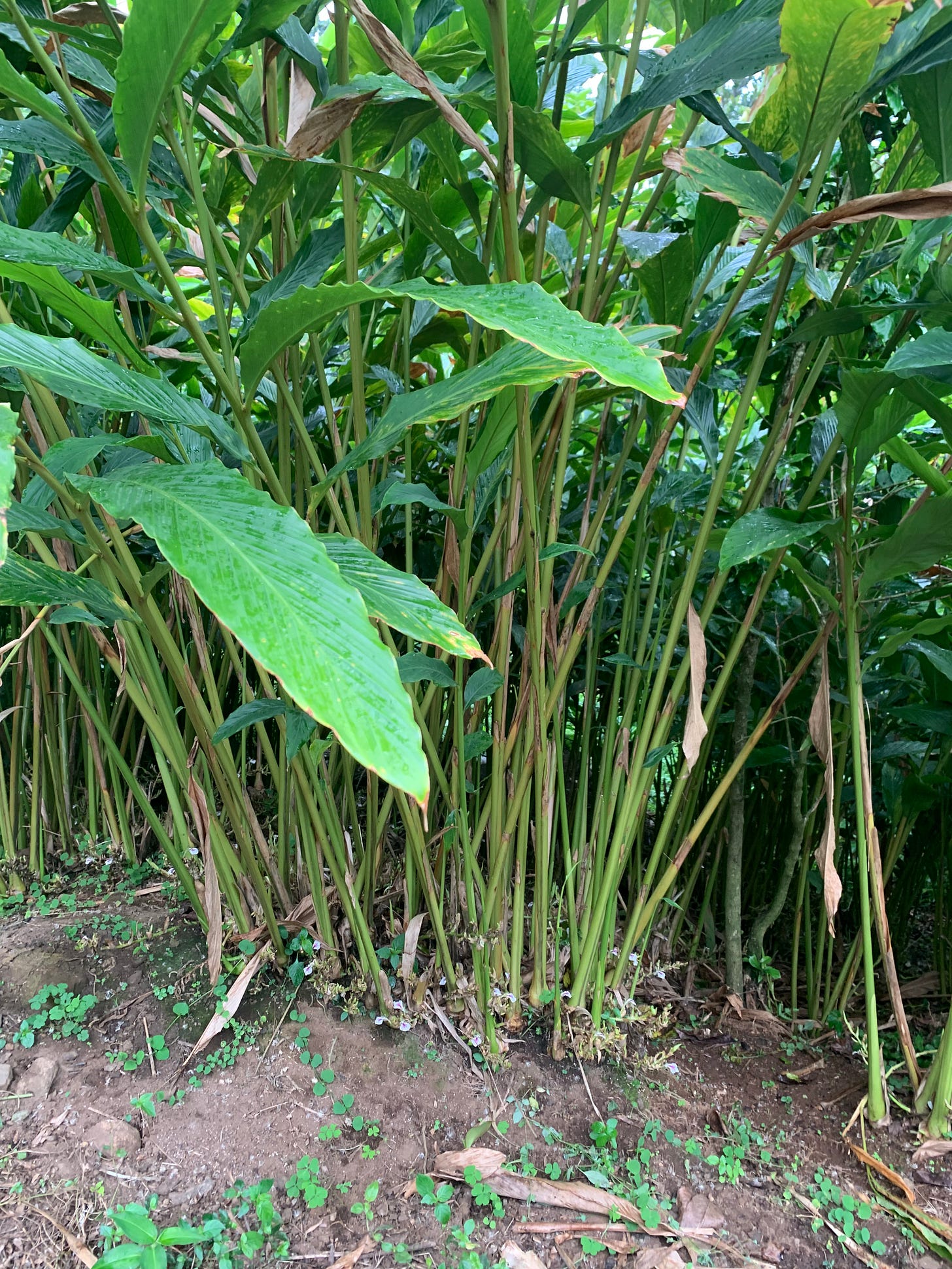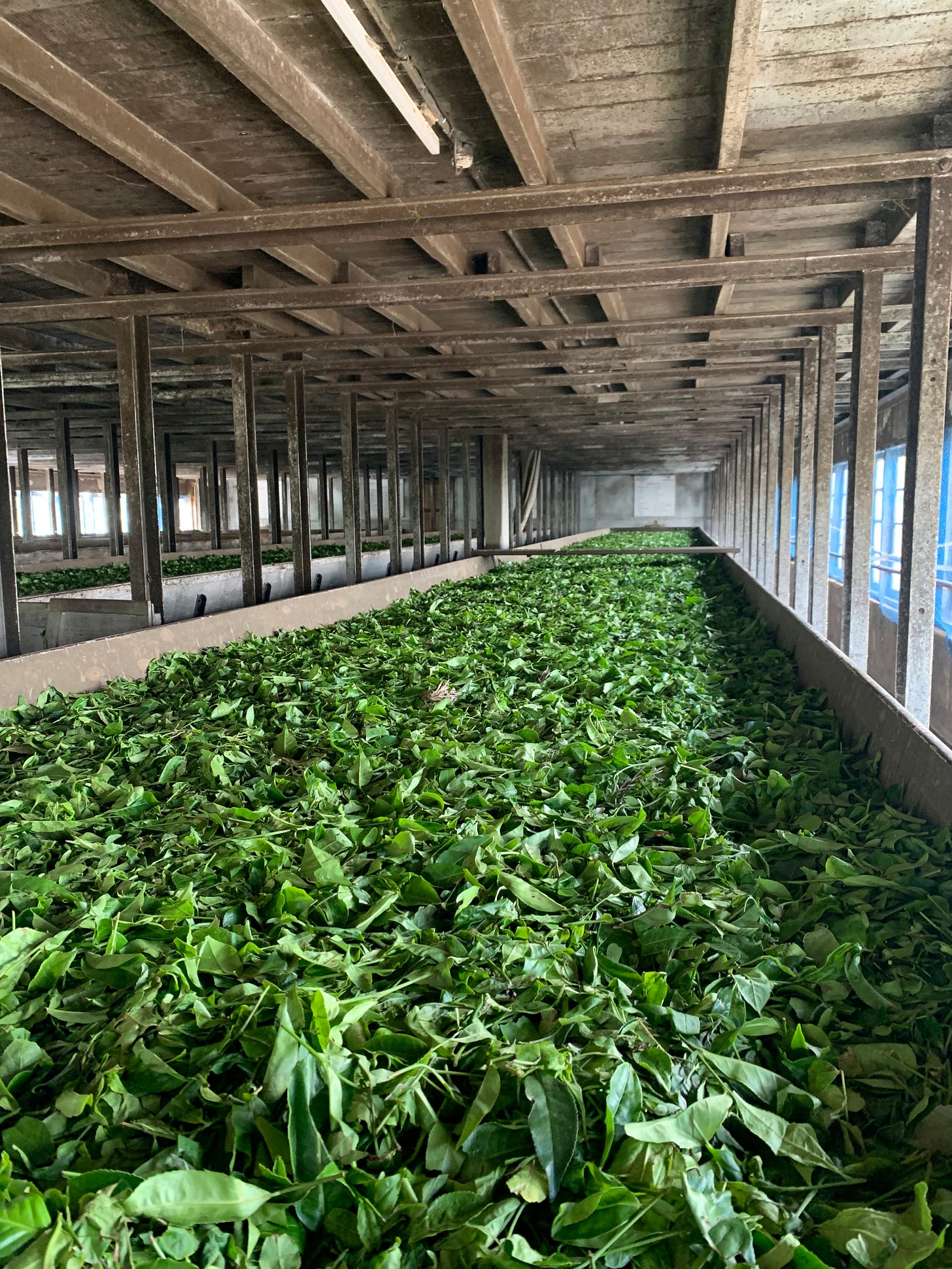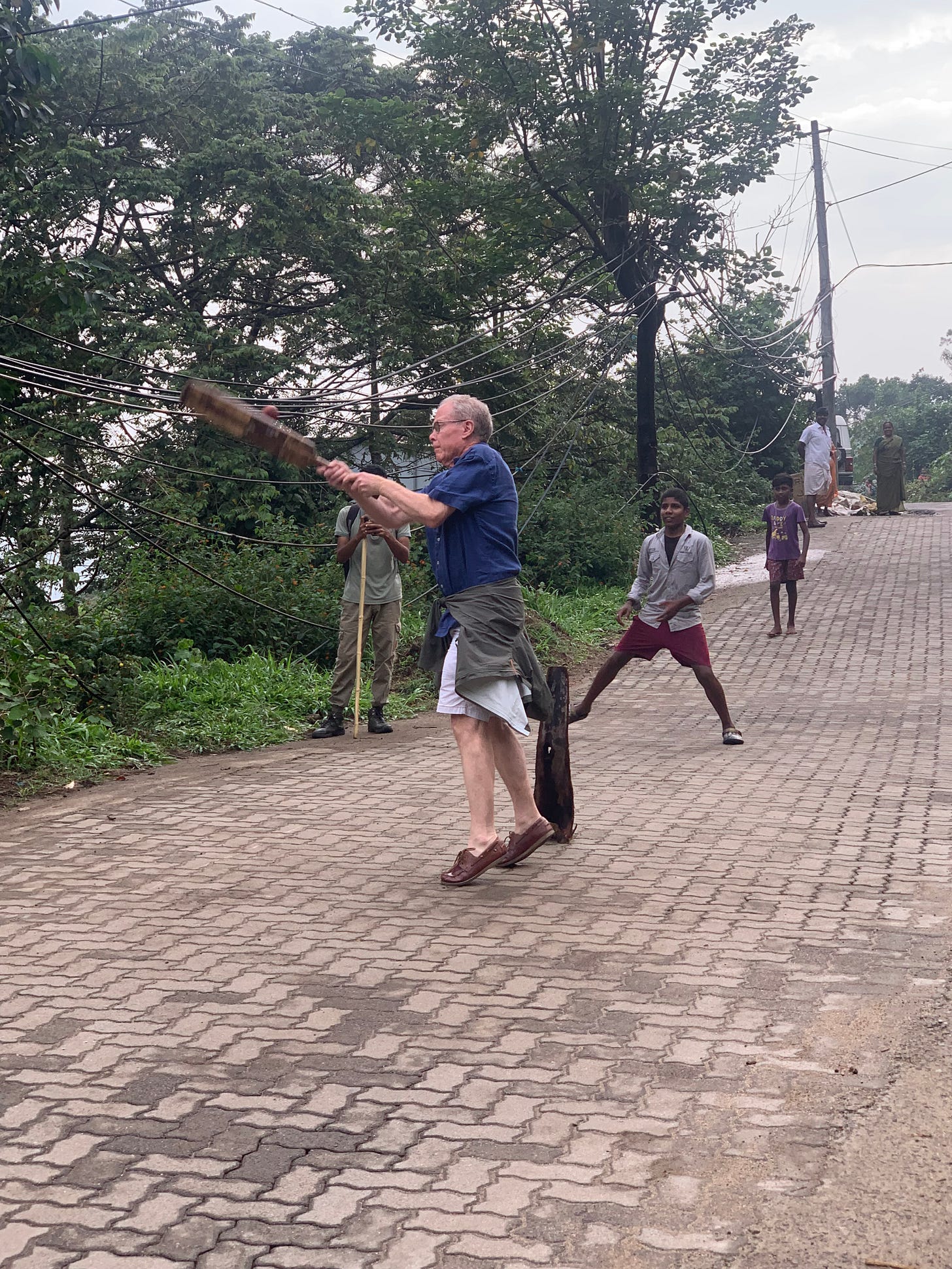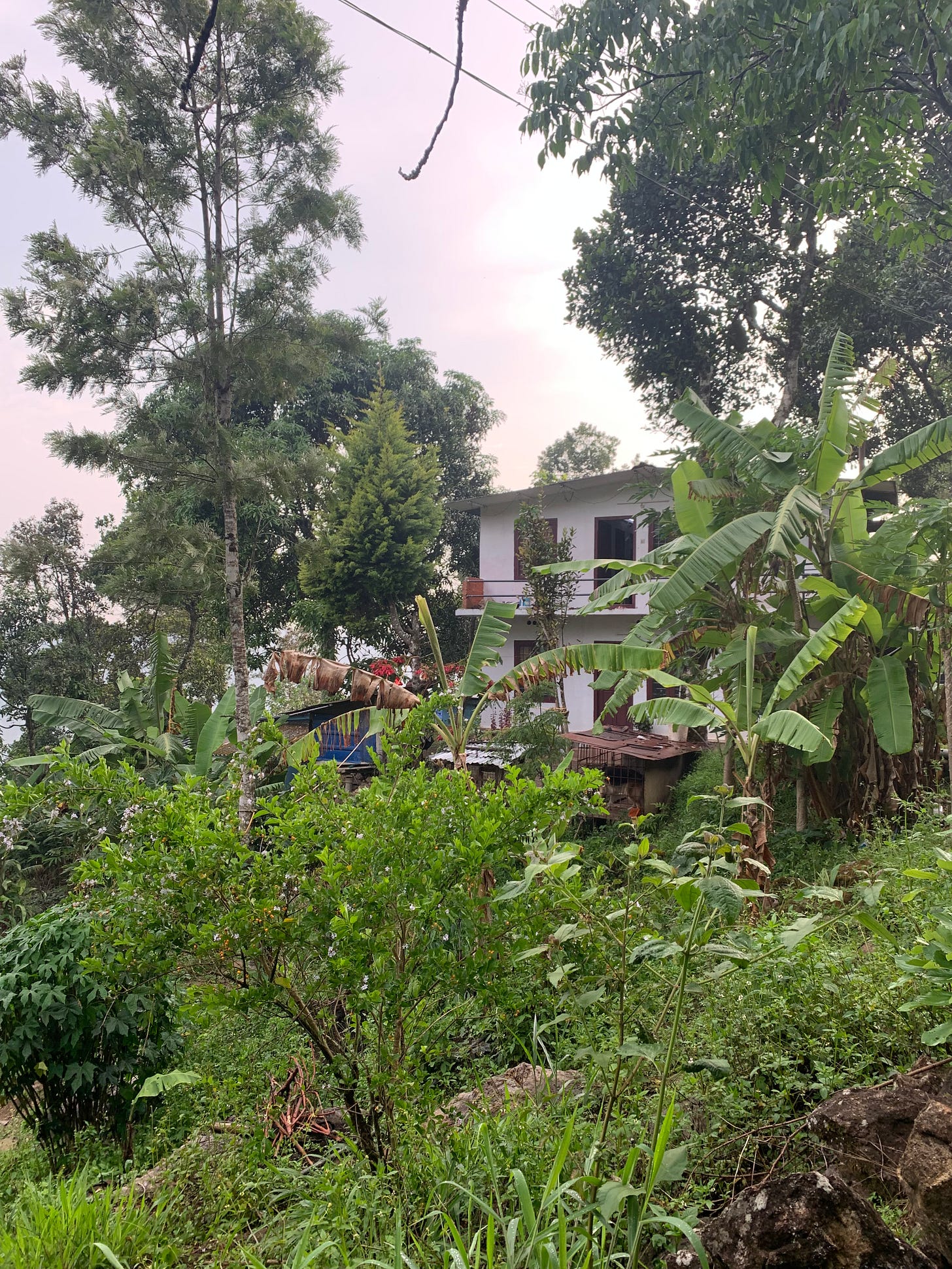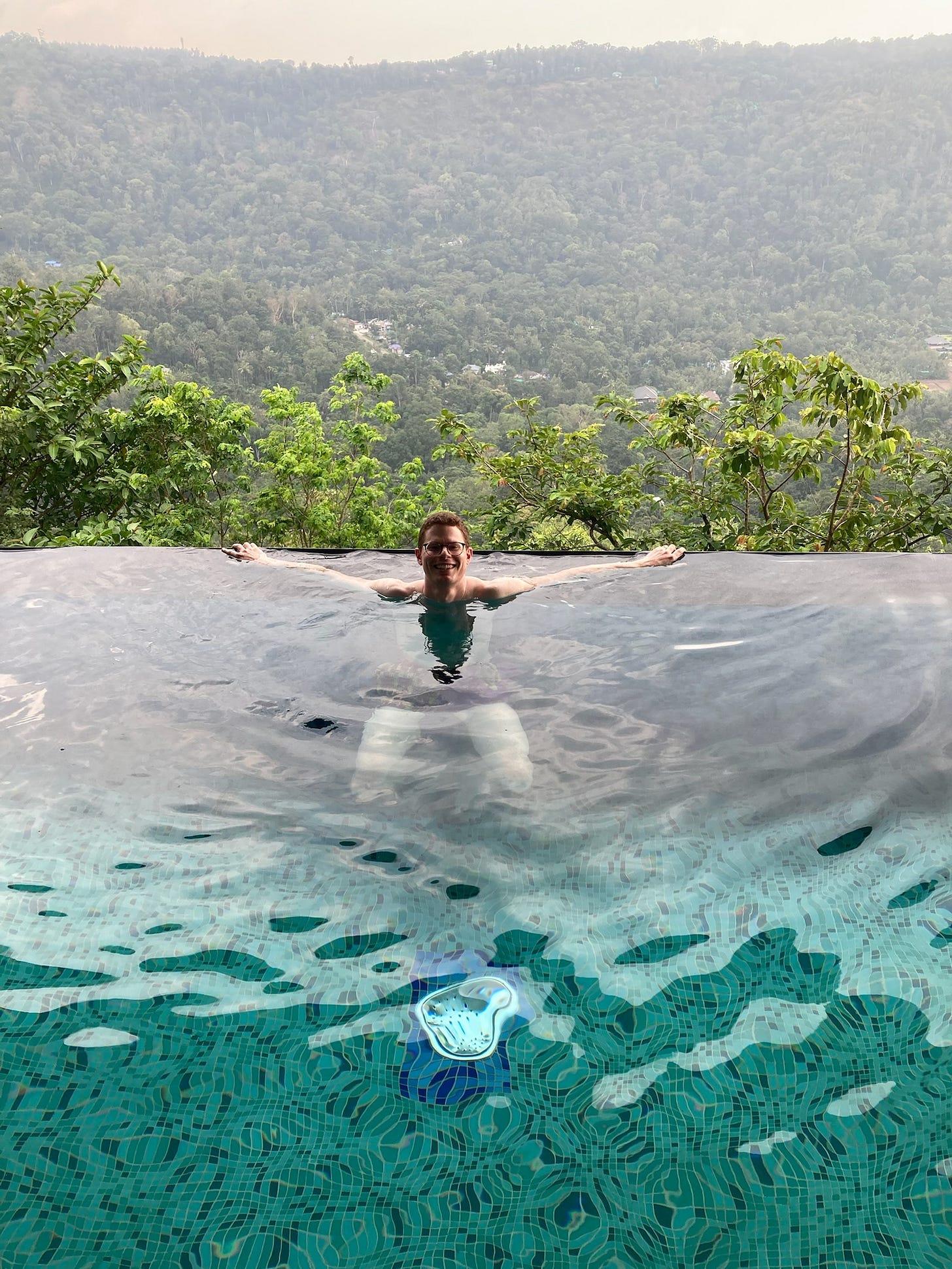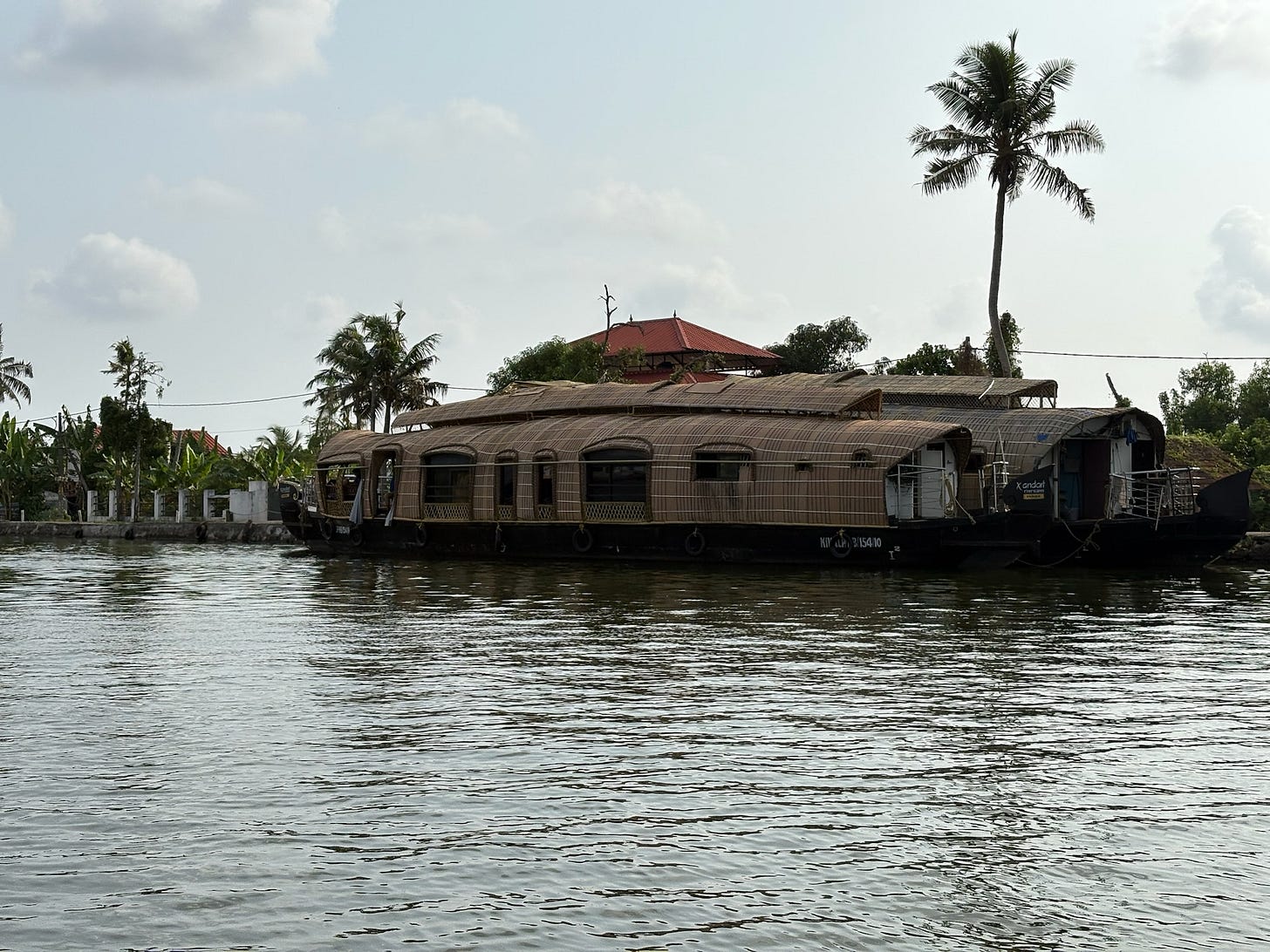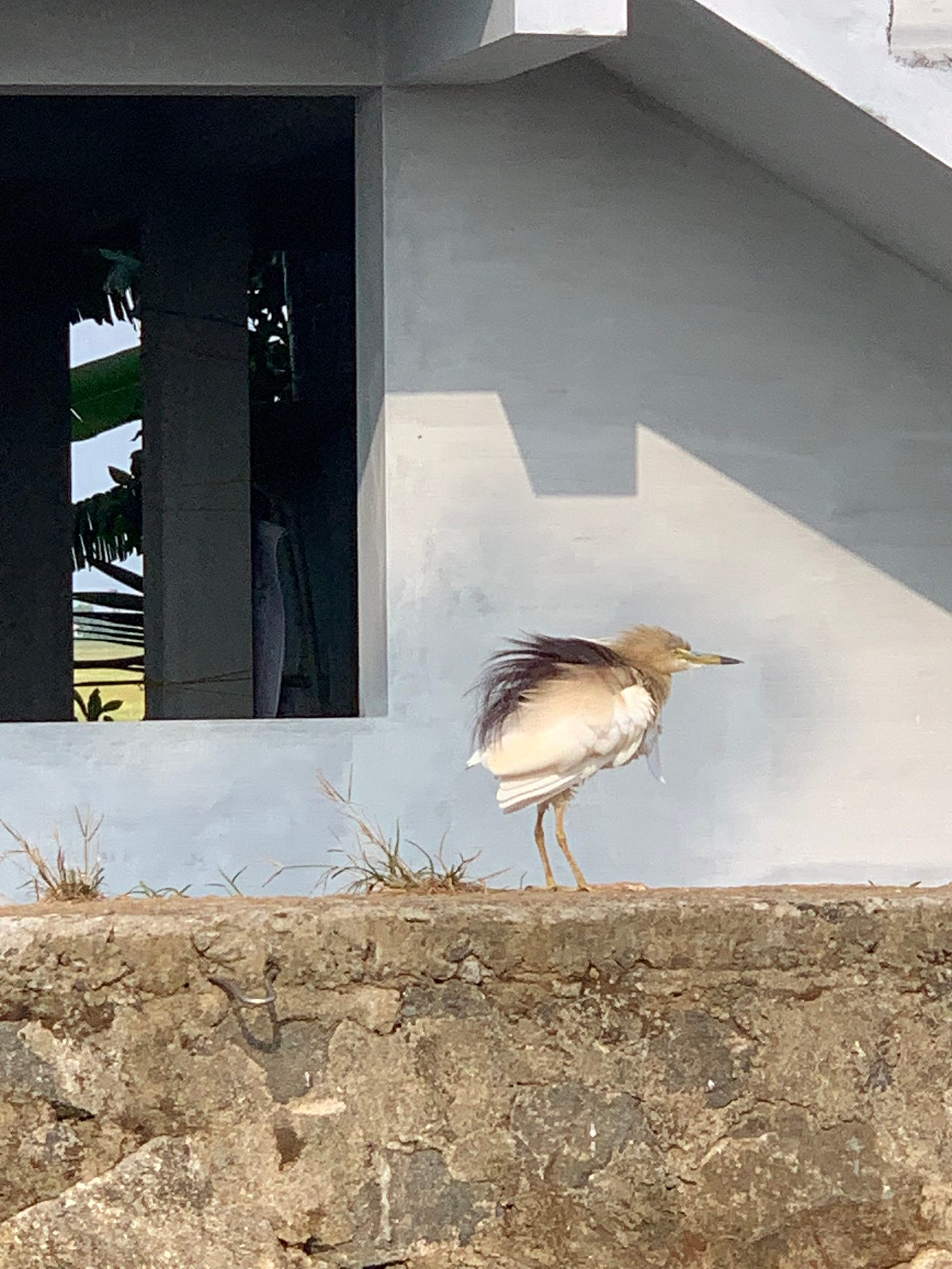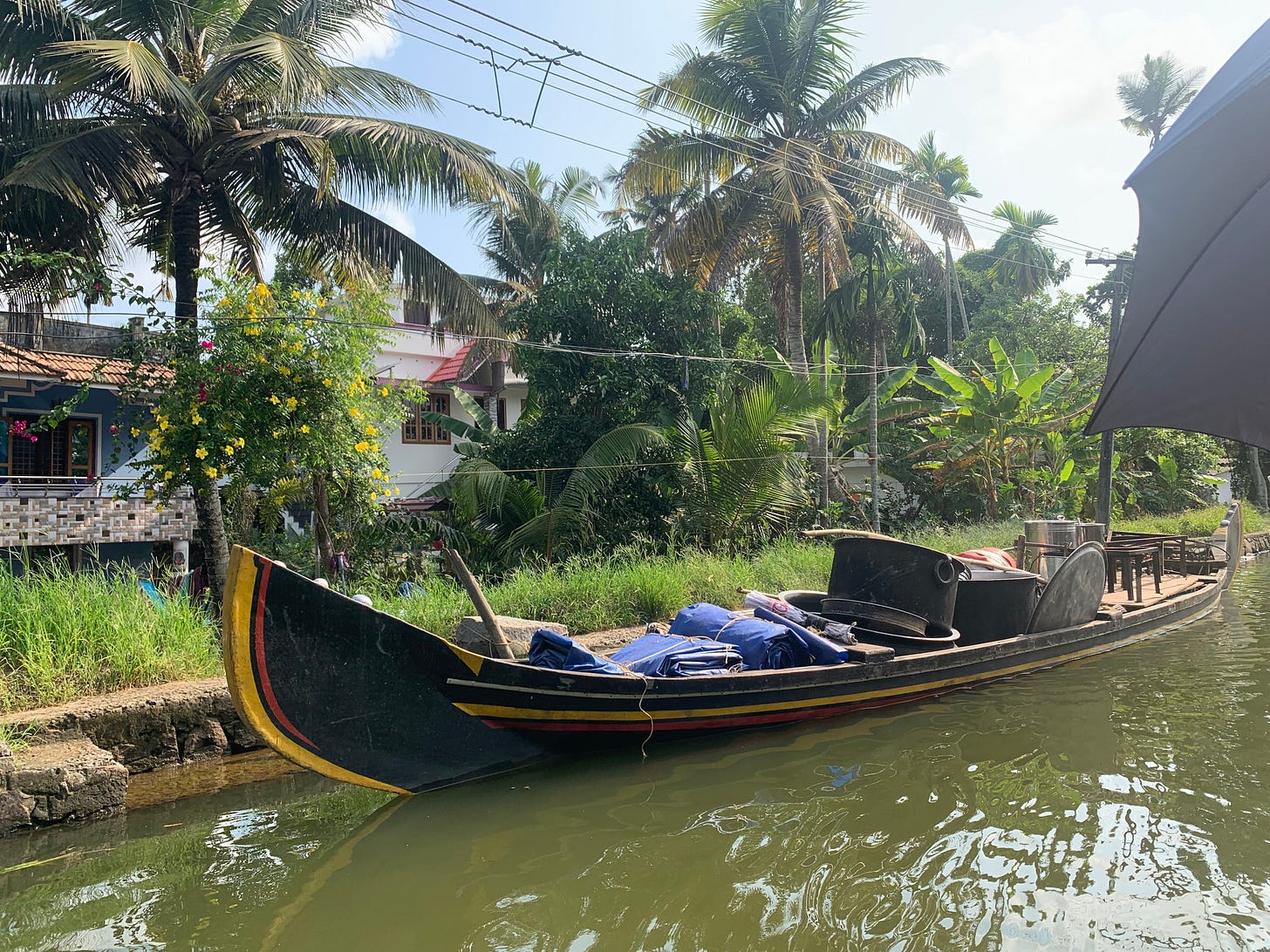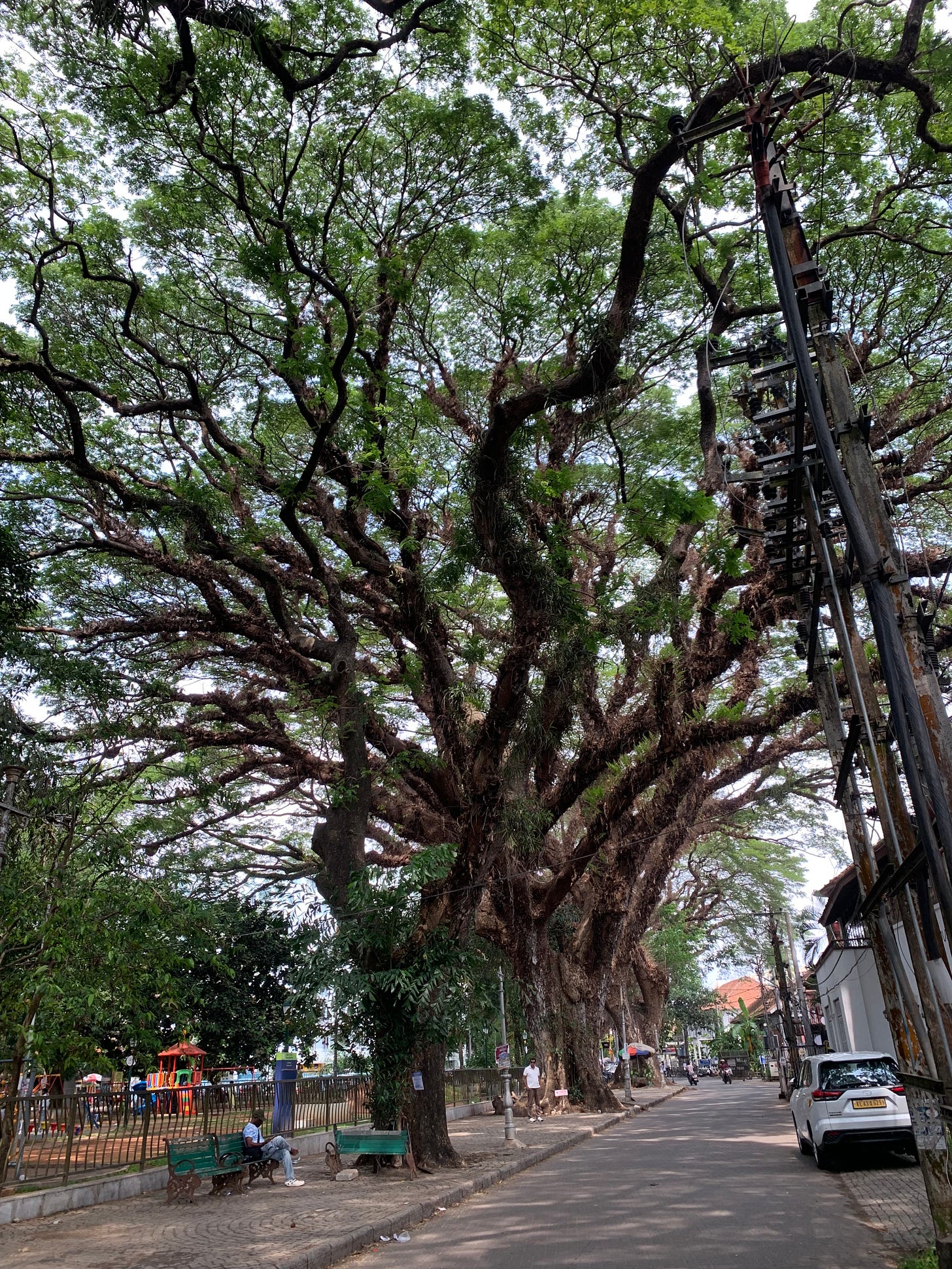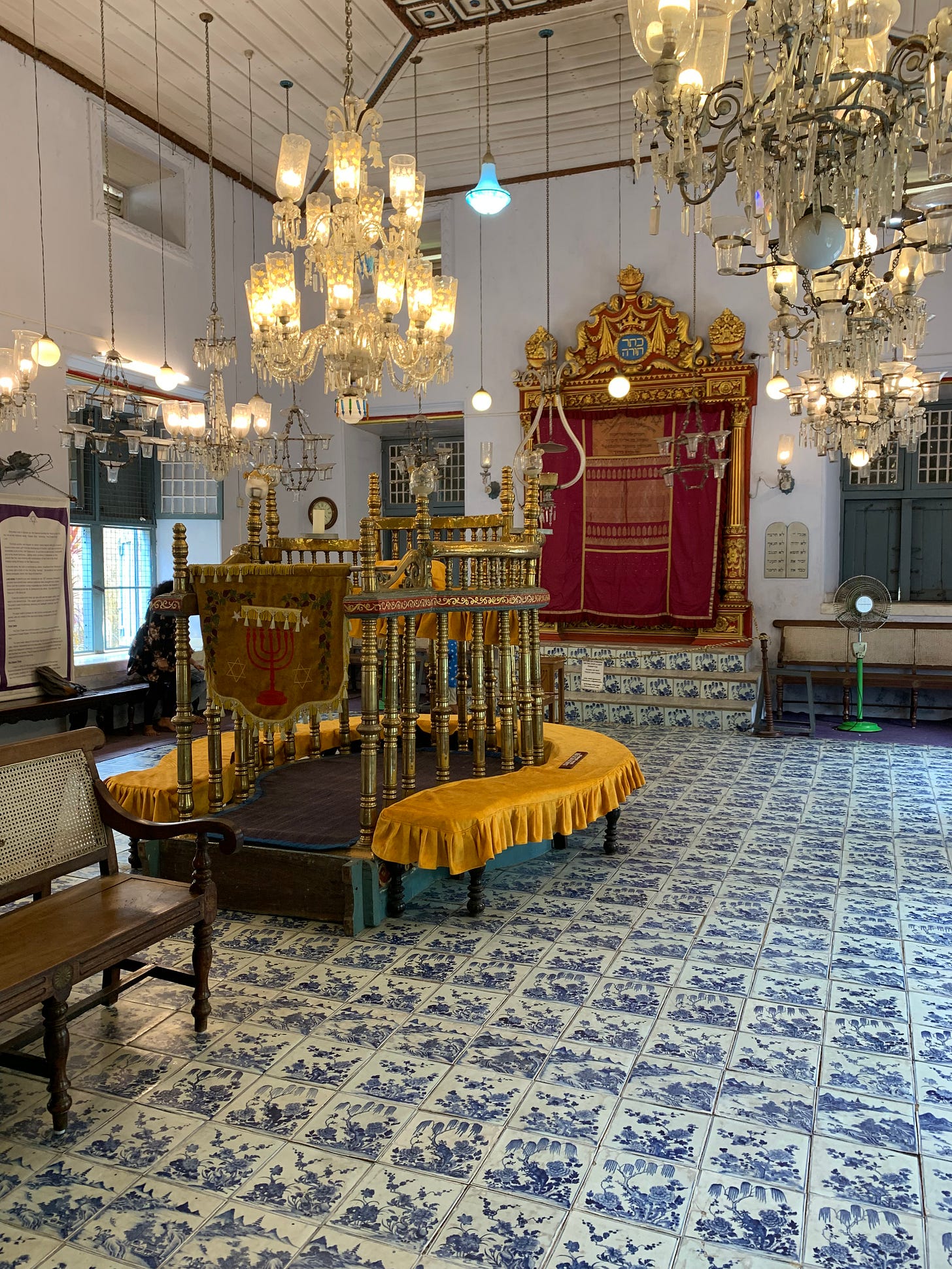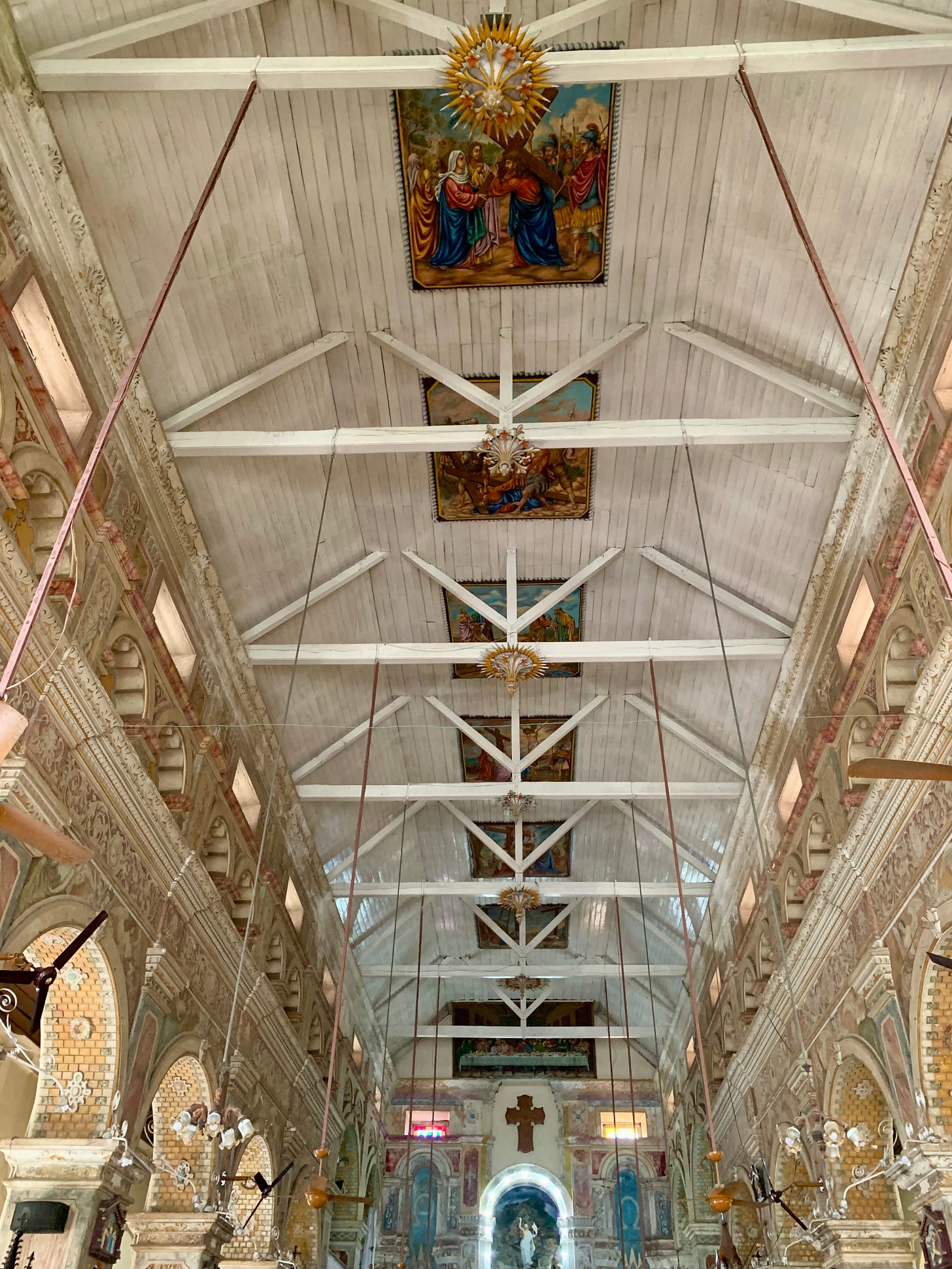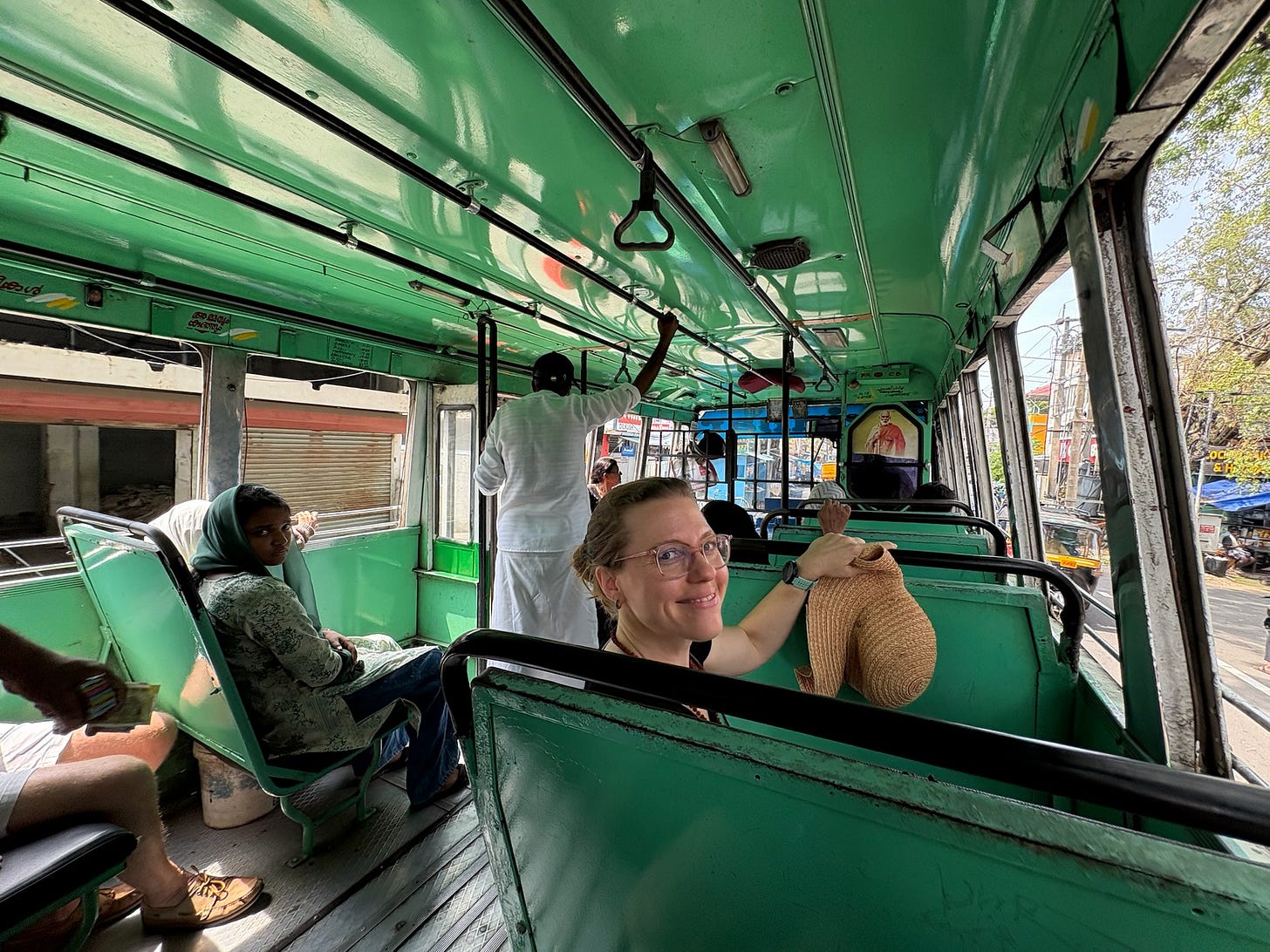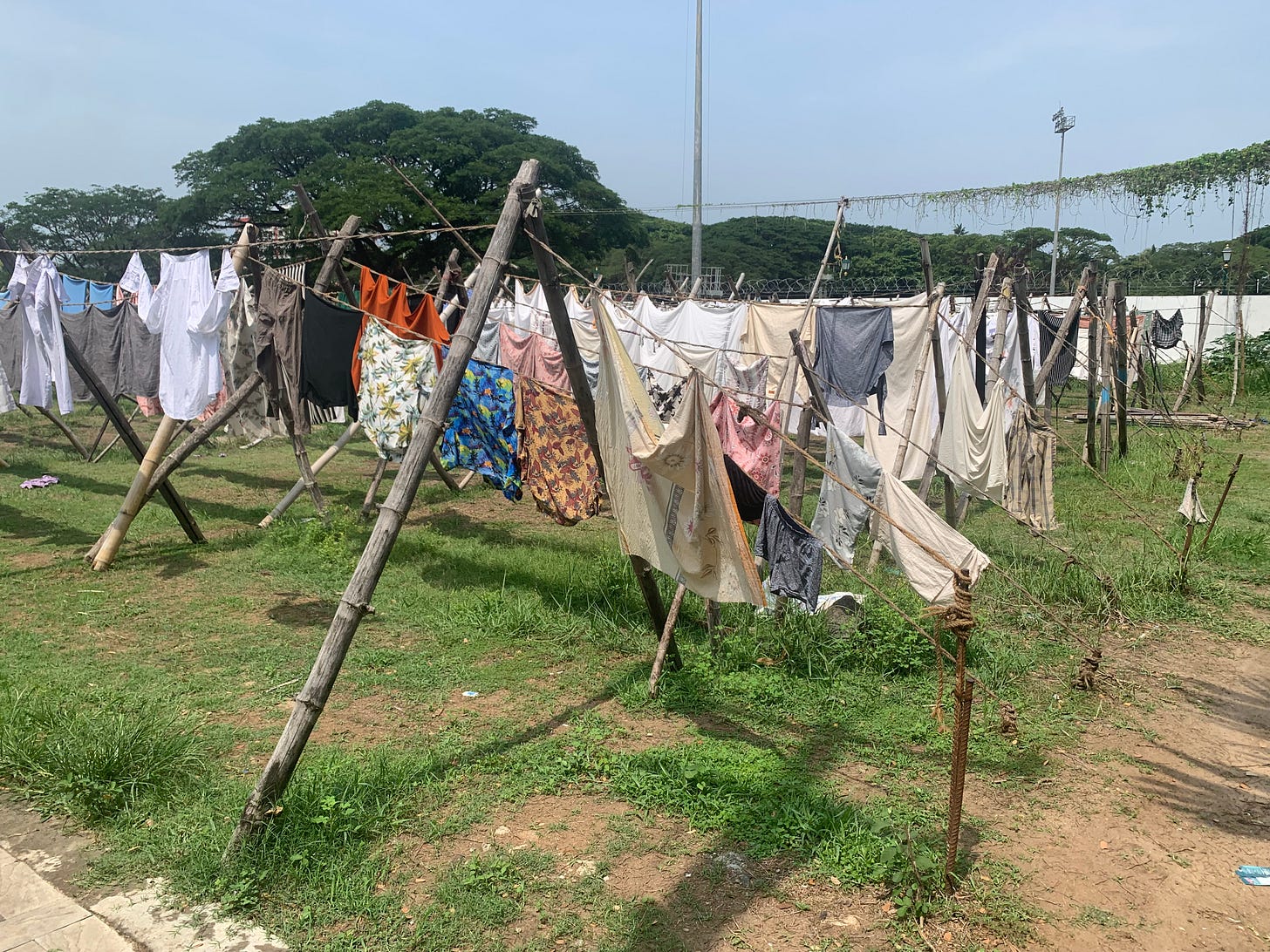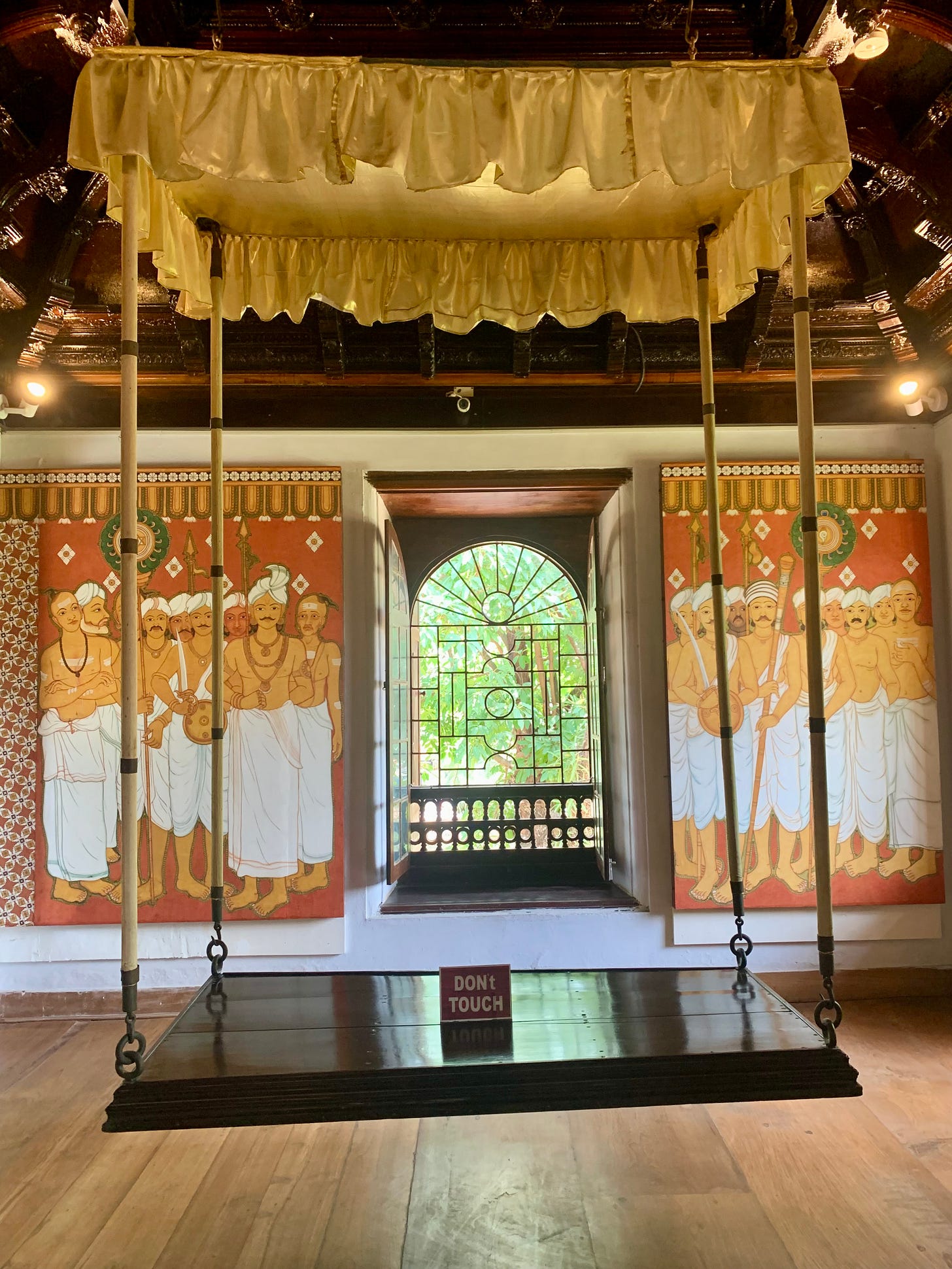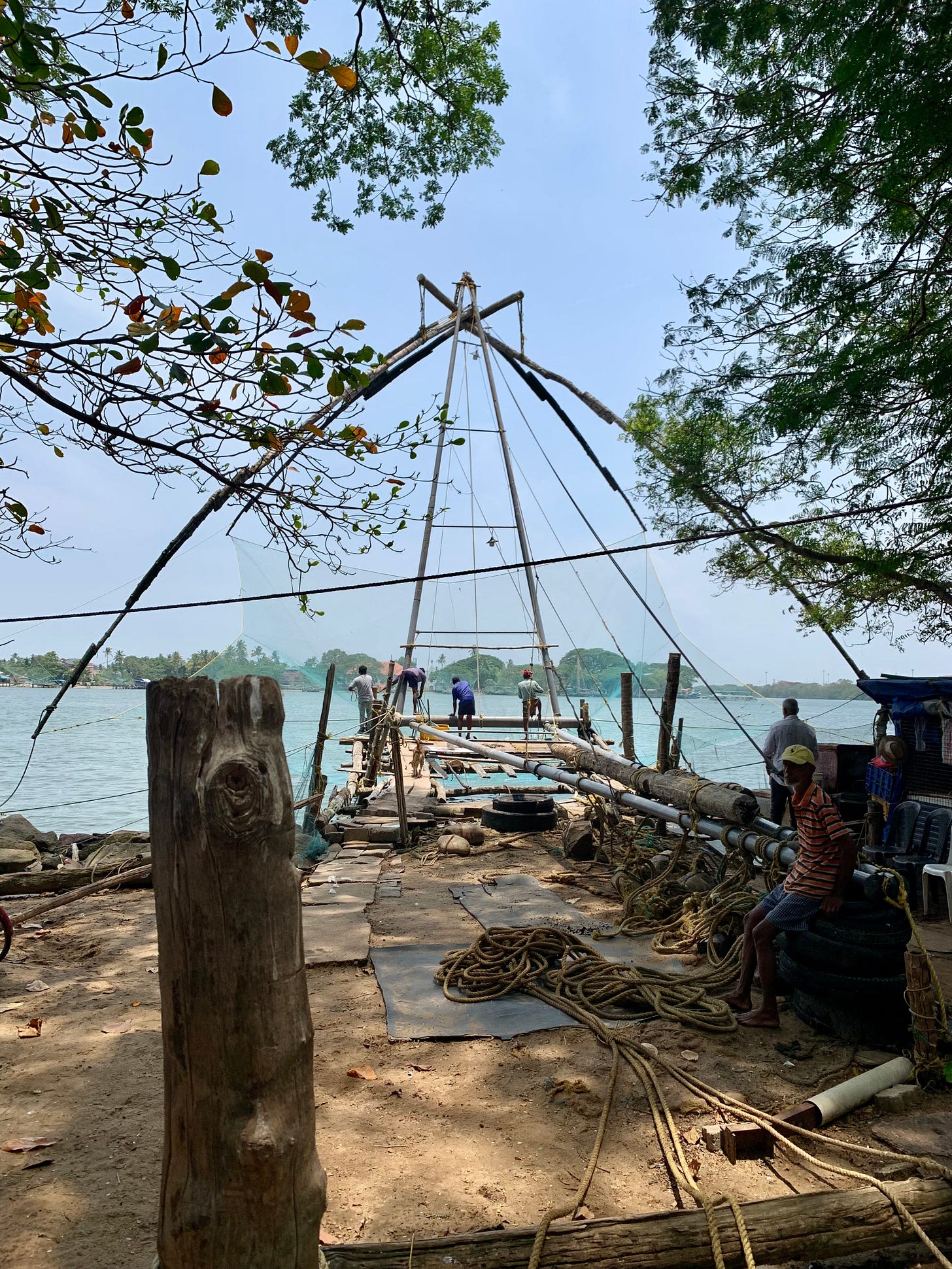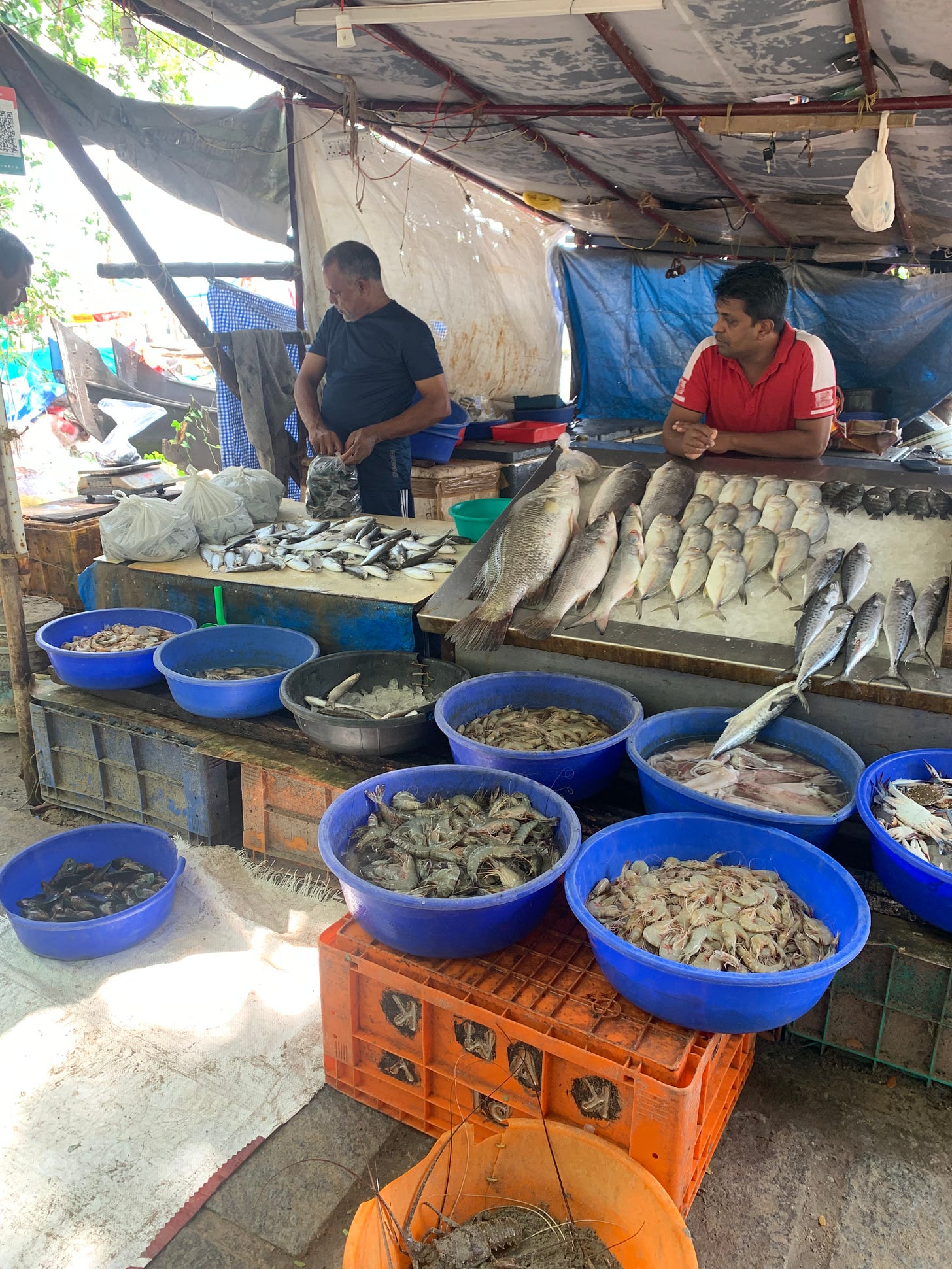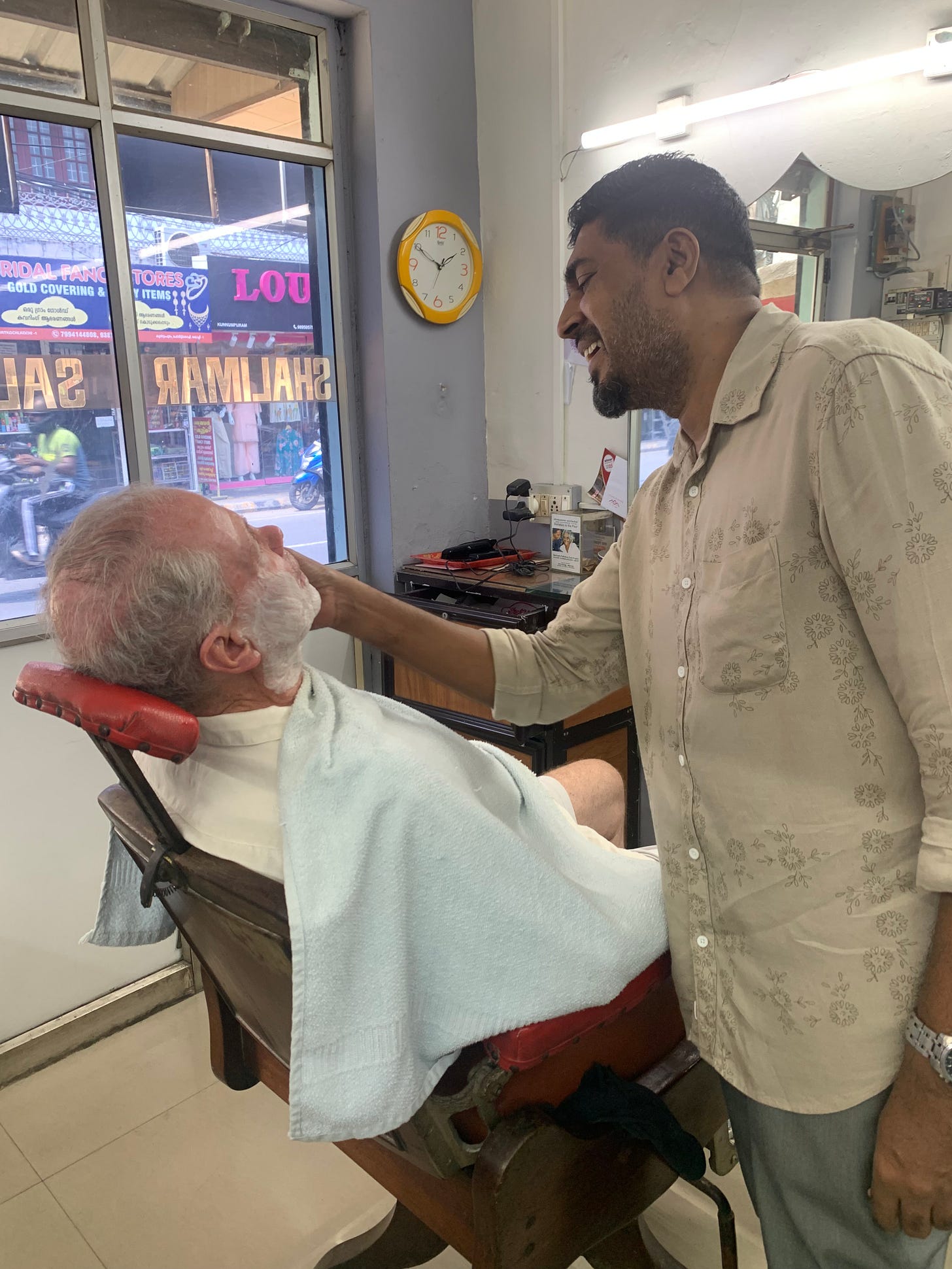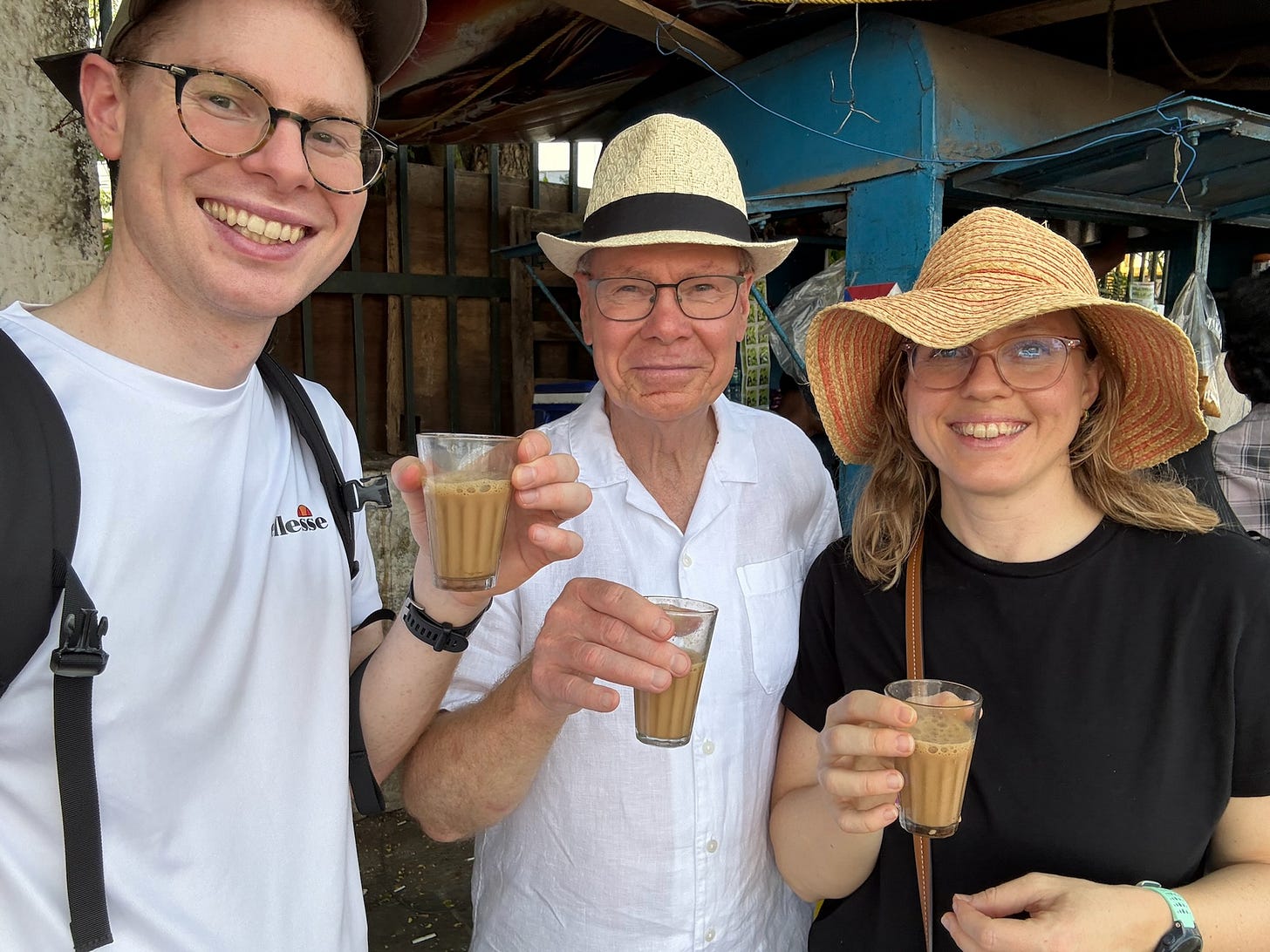The first stop in this new state was up winding switchbacks into the Cardamom Hills. We stayed near Munnar, a Hill Station which is deep in tea territory.
Cardamom plantations line the bumpy country roads and the colourful houses grow jackfruit, papaya and coffee in their kitchen gardens. The waft of spices and constant calls of the jungle myna, thrushes and babblers made this a very relaxing stop. This was a chance for some time to chill, quite literally as it was much cooler.
The Lockhart Tea Factory gave us an authentic insight into the inner workings of a hugely successful global export.
We were chided for adding milk (and sugar!) to our teas. And the factory guide really turned her nose up at our obsession with masala chais. We found these tasted better the grubbier the stall.
We made the most of the hotel in the Hill Station. Ed and I did morning yoga with a challenging twenty minutes of alternate nasal breathing pranayama. We had a cooking lesson and tasted the Keralan speciality dishes, sharing a spicy fish curry with a couple from Bangalore who were there for the weekend.
Dad and I took a trek to visit the surrounding plantations and hiking trails leading to megalithic stone structures said to be from 2000BC.
There was a very special moment where the local lads let him bat for an over in their game of street cricket.
Our guide was inspiring, telling us about all his different bucket list hiking routes in these mountains. He’d suffered a corporate burnout and totally changed careers to become a wilderness guide. He had lots of stories about the difficulties managing the local population of elephants which could be very dangerous on the roads, especially at night. He showed us some of the damage they had done, trampling through different areas.
They had a particular taste for jackfruits, often grown in the locals’ gardens. We heard some loud flares set off during our stay, and this was to keep the herds away and stop them trampling the crops. During Covid, the Keralan government rolled out full internet coverage across the state. This meant that the best source of up-to-date elephant knowledge came from the local village Elephant WhatsApp group.
Ed took one for the team with a brief stint of corporate schmoozing, but he also managed some time to enjoy our private pool.
I can’t say that we were thrilled to return to the heat, but we were excited for our next stop on a houseboat on the Keralan backwaters.
We had a gentle trip with freshly caught fish for lunch at the lake. This part of the world is a twitcher’s paradise with kingfishers, kites and egrets all easy to spot on the banks.
A trip aboard a smaller vessel allowed us to navigate the narrow canals and river ways. We spotted a water snake, a mongoose and countless birds alongside the beautiful waterside properties and local people fishing or playing in the water.
The time onboard went remarkably quickly and the contrast with the noise and bustle back in the big city as we hit the outskirts of Cochin was quite jarring.
Fort Kochi is the historic quarter and tourist hub. It was a very easy to immediately fall in love with the shady streets, abundance of restored hotels, boutique shops and art cafés.
The enormous rain trees line the streets of this quarter, colonized by the Portuguese in 1503, the Dutch in 1663 and then the British in 1814. The most ancient of these trees is 350 years old with a huge gnarled trunk and sprawling branches.
Our sightseeing started at the synagogue, the oldest in the Commonwealth, built in 1568. The beautiful blue willow patterned tiles were brought from Canton in China in the 18th century.
There are now only 18-20 Jewish people living in Cochin, most having resettled in Israel. The Catholic faith is the majority here with roughly 60% of the population. Pope John Paul visited Cochin in 1984 to huge crowds to proclaim the Santa Cruz Cathedral a Basilica.
We hopped on a bus to the Doby Khana Public Laundry which has been in operation since the 1700s. It runs as a cooperative and still uses traditional methods, with washing beaten by hand and dried on twisted washing lines in the sun.
The teak ceilings and intricate wall murals of Mattancherry palace were beautifully preserved and displayed alongside photos of the Cochin Rajas who were gifted the palace in 1545 by the Portuguese. The religious art was particularly striking with the story from the Ramayana told across two rooms. It was easy to be transported back to a very different time.
Our final days in Cochin were packed with soaking up the atmosphere of the iconic Chinese fishing nets in Vasco de Gama square, seafood dinners and plenty of shopping.
The boys got a shave and a haircut and I packed my tiny case to the brim with souvenirs for the gang back home.
What a brilliant adventure we had in this beautiful country! 🇮🇳💕

